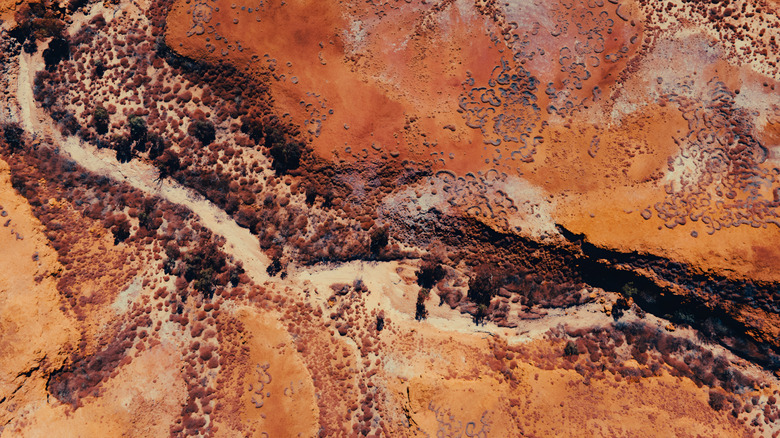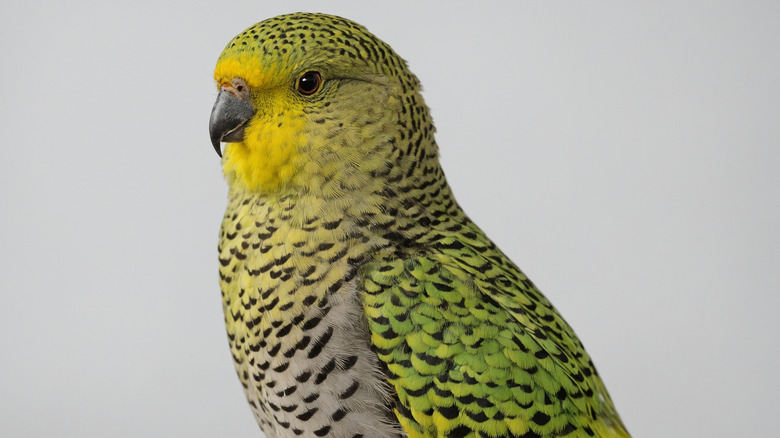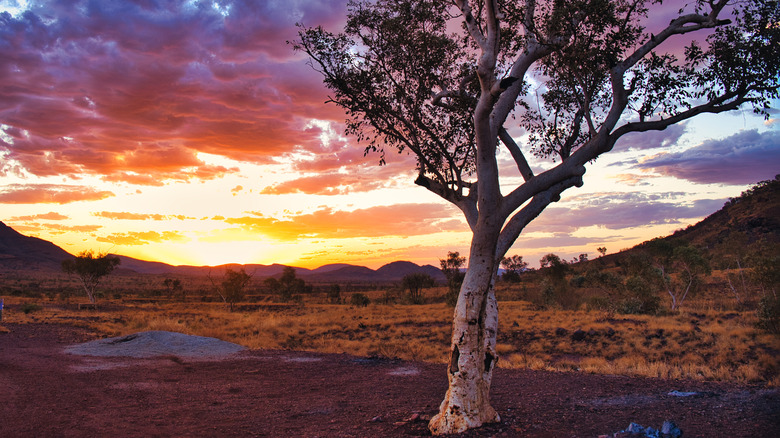Australia's Desert Area Is A Stunning Spot Home To A Rare, Beautiful Bird Making An Extraordinary Comeback
Life can seem sparse in Australia's vast, arid inland plains. Smothered by rust-red desert sands, the skyline is distinguished by sporadic jutting rocks cutting into the enormous open skies. However, nestled under the brush and clinging to the sides of the crag, wildlife flourishes in the undisturbed Australian heartland. For those with a keen eye, there are rare and intriguing snakes, lizards, and birds hidden amid the desolation.
In the Ngururrpa Indigenous Protected Area, a region within Western Australia's Great Sandy Desert, one rare bird population has been causing a stir in the scientific community. For about 100 years, the area's resident night parrots were thought to be extinct, but the secretive species just managed to fly right under the radar and blend into the arid landscape. In its entirety, the Ngururrpa Indigenous Protected Area is just slightly smaller than the U.S. state of Maryland; encompassing such an enormous stretch of Western Australia's almost entirely desolate deserts, it's unsurprising that the species eluded identification for so many years. Though it's highly complicated for travelers to arrange a trip to see the rare parrots in person, the discoveries of new life in the Outback inspire more and more adventurers to explore Australia's scenic destinations that are unlike anywhere else in the world.
The Ngururrpa Indigenous Protected Area's elusive night parrots
Recorded history stretches for millennia in the Aboriginal lands of Western Australia. Ancient narratives reveal that the Aboriginal population of the deserts has long known that night parrots are exceptionally elusive birds. Catching a glimpse of the colorful creatures has been compared to finding the Holy Grail of Birdwatching, given their proclivity for nests hidden amid dense spinifex bushes. The rare species only emerge at night on forays for seeds. As such, tracking down the small population surviving in the Ngururrpa Indigenous Protected Area required an expert expedition.
Over the course of a three-year-long survey conducted by Indigenous rangers and ecologists, the theory of their extinction was disproved. These researchers found 50 of the elusive birds living in the area across 17 separate sites. The rangers and scientists used songmeters, acoustic recorders that discerned the distinctive calls of the rare parrots, to determine where they could find their habitats. They followed up by setting up camera-traps used to survey the local predators, collecting their scat to analyze their diets and establish whether the rare parrots had recently featured on the menu. Since establishing definitive evidence of the small but flourishing population, the Indigenous rangers have found nests, eggs, and vibrant feathers — these signs of breeding grounds give hope for the future of the species once thought doomed to extinction.
How to visit the Ngururrpa Indigenous Protected Area in Western Australia
Wedged between the southeastern edge of the Kimberley and the far northeast of the Pilbara, the Ngururrpa Indigenous Protected Area is firmly in the middle of nowhere. Its nearest neighboring town is around 310 miles away. As such, it can be highly complicated to visit the remote region for yourself. There is no public route to the isolated area, and all non-Aboriginal visitors require a permit, issued in advance of travel. There are a few outstations scattered around the Outback, but these require a 4x4 to navigate through sandplains and seasonal bogs. Even for those prepared to navigate the trek to the region, the chances of spying one of the rare night parrots are infinitesimally small — very few people have ever even glimpsed their viridescent feathers. There are, however, areas of the Australian Outback with similarly spectacular topography and abundant animal spotting opportunities that are better suited to travelers.
Some of Western Australia's other desert dwellers can be seen on a wildlife excursion organized from the remote base city of Broome, the "Pearl of the Kimberley," where red cliffs meet stunning turquoise seas. Alternatively, venture further into the Australian wilderness by planning a visit to the other, more accessible side of Western Australia's vast Pilbara region, where birdwatchers can see other rare and resplendent birds that thrive in the diverse state, like the elusive grey honeyeater and Pilbara grasswren. Though the state's renowned Kakadu National Park is better known for the enormous, gnashing crocodiles that make it one of the world's most dangerous national parks, it's also a stellar spot for desert birdwatching. Some 280 avian species live amid the park's sandstone cliffs and woodland savannahs, easily found on scenic safari tours that run through the region.


